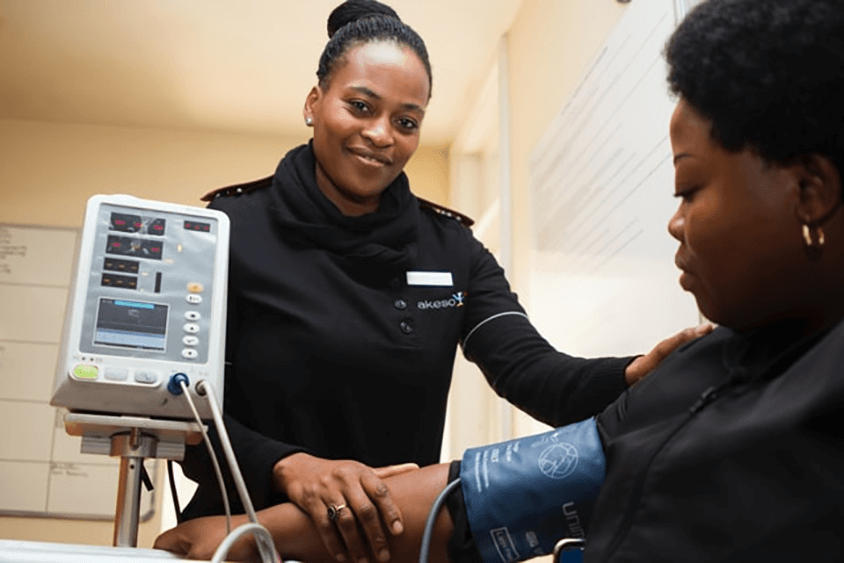In the vast realm of healthcare, the term “fellow doctor” often sparks curiosity and prompts questions about the specific role and responsibilities associated with this designation. To shed light on this, let’s delve into the intricacies of what it means to be a fellow doctor in medicine.
What is a Fellow Doctor?
A fellow doctor is an individual who has completed their medical degree and residency training and has chosen to pursue further specialization in a specific field of medicine. After completing medical school and a residency program in a specific area of medicine, some doctors choose to pursue additional training in a more focused and advanced field, known as a fellowship.
During the fellowship, these doctors, often referred to as “fellows,” deepen their knowledge and skills in a particular medical subspecialty such as cardiology, gastroenterology, oncology, or another specialized area. The fellowship period typically ranges from one to three years, during which fellows engage in advanced clinical experiences, research activities, and educational opportunities under the guidance of expert mentors.
Fellow doctors play a crucial role in contributing to the advancement of medical knowledge within their subspecialty and are often involved in patient care, research projects, and teaching activities. Once they successfully complete their fellowship training, they may pursue board certification in their subspecialty and become recognized experts in their chosen field.
In a hospital or clinical setting, the term “fellow” is commonly used to distinguish these physicians from residents and attending physicians. It signifies a stage of advanced training and specialization on the path to becoming a fully independent and specialized medical practitioner.
How to Become a Fellow Doctor?
Complete Medical School
Obtain a Doctor of Medicine (MD) or Doctor of Osteopathic Medicine (DO) degree from an accredited Caribbean medical school. This typically takes four years of undergraduate education, followed by four years of medical school.
Complete Residency Training
After medical school, you need to complete a residency program in a specific medical specialty. Residency training provides hands-on clinical experience and typically lasts three to seven years, depending on the chosen specialty.
Choose a Subspecialty
Identify a specific area within your chosen medical specialty that you want to specialize in. Common subspecialties include cardiology, gastroenterology, infectious diseases, rheumatology, and many others.
Research Fellowship Programs
Explore fellowship programs that offer training in your chosen subspecialty. Look for accredited programs at reputable medical institutions. Websites like the Accreditation Council for Graduate Medical Education (ACGME) or specialty-specific organizations often provide information on accredited fellowships. Once you’ve identified suitable programs, submit applications to the fellowship programs of your choice. The application process typically includes submitting a curriculum vitae (CV), letters of recommendation, a personal statement, and participating in interviews. If accepted into a fellowship program, you will undergo specialized training in your chosen subspecialty. The duration of fellowships varies, usually ranging from one to three years. During this time, you will engage in clinical rotations, research, and educational activities relevant to your subspecialty.
Participate in Research and Scholarly Activities
Many fellowships emphasize research and scholarly activities. Engage in research projects, publish papers, and present your findings at conferences. This contributes not only to your personal development but also to the advancement of knowledge in your subspecialty.
Obtain Board Certification (Optional)
While not always mandatory, obtaining board certification in your subspecialty can enhance your professional credentials. Board certification is typically offered by specialty-specific boards, and requirements may vary.
What Is the Difference Between Medical Fellow and A Resident?
The terms “medical fellow” and “resident” refer to distinct stages in a physician’s training and education. While both positions involve postgraduate medical education, there are key differences in terms of duration, focus, and level of independence. A medical resident is a physician who has completed medical school and is undergoing postgraduate training in a specific medical specialty. Residents are licensed doctors but are still in the process of honing their clinical skills and medical knowledge. Residents work under the supervision of attending physicians, who are experienced, board-certified doctors. The level of autonomy increases as residents progress through their training, with more responsibility granted in later years. Residents are actively involved in patient care, conducting physical examinations, diagnosing conditions, and developing treatment plans. They often work long hours, including overnight shifts, to gain exposure to a diverse array of cases.
On the other hand, a medical fellow is a physician who has completed medical school and residency training and has chosen to pursue additional, specialized training in a specific subspecialty within their field of expertise. Fellowships typically last one to three years, focusing on a narrower area within the physician’s chosen specialty. The duration may vary based on the complexity of the subspecialty and the specific requirements of the fellowship program. The following are some examples of common fellowship durations in various specialties:
• Sports Medicine: 1 year
• Cardiology: 3 years
• Endocrinology: 2 years
• Gastroenterology: 3 years
• Hematology: 2 years
• Infectious Disease: 2 years
• Nephrology: 2 years
• Pulmonology: 2-3 years
• Rheumatology: 2 years
• Allergy and Immunology: 2 years
Fellows work with a higher level of independence compared to residents. While there is still oversight by attending physicians, fellows are expected to take on more advanced clinical responsibilities and engage in scholarly activities. Fellowships are highly specialized and concentrate on a specific aspect or subspecialty within the broader field of medicine. Common subspecialties include cardiology, gastroenterology, infectious diseases, and more. Fellows have a more concentrated focus on their subspecialty, providing advanced care and often participating in research activities related to their field. They may also have teaching responsibilities, educating residents and medical students.
Roles and Responsibilities of a Fellow
The role of a fellow doctor varies based on their chosen subspecialty. In general, they are responsible for providing specialized care to patients, conducting research to hone their skills in their area of focus, and staying abreast of the latest advancements in their field. Fellow doctors often work closely with attending physicians, residents, and other healthcare professionals to collaboratively manage patient cases and contribute to the advancement of medical knowledge. Here are some general duties that a fellow in medicine may carry out:
• See patients in clinic or the hospital
• Diagnose and treat diseases and conditions
• Order and interpret tests
• Perform procedures
• Prescribe medications
• Counsel patients and their families
So, you have Completed a fellowship in medicine – What’s Next?
After completing a medical fellowship, physicians have several options and opportunities to explore, depending on their career goals, interests, and the specific subspecialty they have trained in. Here are some common paths that physicians may take after finishing a fellowship:
Work in a clinic or Hospital: Many physicians choose to enter private practice, where they can provide specialized care in their chosen subspecialty to patients in a community setting, while others may join hospital-based practices, working within a medical center to offer specialized services and contribute to patient care.
Work in an Academic Setting: You can opt for a career in academic medicine, which combines clinical practice with teaching medical students, residents, and fellows. Many fellow doctors actively engage in research activities, contributing to the ever-evolving landscape of medical science. They may publish research papers, present findings at conferences, and participate in clinical trials, all of which enhance the overall understanding of their chosen subspecialty.
Join the Pharmaceutical industry: Physicians may enter roles within pharmaceutical companies or other healthcare-related industries, contributing their expertise to areas such as medical affairs, research and development, or regulatory affairs.
Work within Public Health and Administration: Some physicians transition into administrative roles, contributing to healthcare policy, hospital administration, or public health initiatives. Physicians may explore opportunities to work in global health, participating in humanitarian missions, medical outreach programs, or international healthcare organizations.
Pursue a Subspecialty Training: Physicians may pursue further subspecialty training by undertaking additional fellowships to enhance their expertise and broaden their scope within a specific field.
Launch your own business: Some physicians may choose entrepreneurial paths, such as starting their own medical practices, clinics, or healthcare-related businesses. This requires knowledge of creating and running a business in addition to the standard medical knowledge.
Take on a leadership role: Physicians may take on leadership roles in professional medical organizations, contributing to the development and advancement of their subspecialty.







